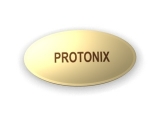Pharmacies in Canada
If you're planning on traveling to Canada, or relocating, you'll want to know a thing or two about how pharmacies function in the country. Every country has different rules, regulations, and procedures, and pharmacies are certainly no exception. In this article, we will walk you through everything you need to know about pharmacies in Canada to help make your transition smoother.
Pharmacies in Canada are heavily regulated by the government, ensuring safety and quality of medication. The requirements for pharmacists are also much higher than some other countries. This all means that the cost of medication may be higher than other countries, but the quality will be top notch.
Another difference between Canadian pharmacies and other countries, is that it is mostly regulated by the provincial governments. This means that you will find different regulations and different laws in each province, but overall the general principles remain the same wherever you go.
Whether you're looking to buy over the counter medication, or something that requires a prescription, it's important to know what to expect when visiting a pharmacy in Canada. Let's dive in and find out everything you need to know!
Overview of Canada's Healthcare System
Introduction
Canada's healthcare system is often praised as one of the best in the world. It is publicly funded, which means that residents have access to necessary medical services without having to pay out of pocket. However, the system is not perfect and faces challenges such as long wait times and a shortage of healthcare providers in some areas.
Types of Healthcare Services
Canada's healthcare system provides a wide range of services, including preventive care, primary care, acute care, and specialized care. Preventive care includes things like immunizations and screenings to detect diseases early on. Primary care involves visits to family doctors or general practitioners for routine check-ups and non-emergency medical issues. Acute care refers to emergency services provided by hospitals, such as emergency room visits or surgeries. Specialized care includes services provided by specialists such as oncologists or cardiologists.
Funding of the Healthcare System
Canada's healthcare system is publicly funded through taxes. The federal government provides funding to the provinces and territories, which are responsible for delivering healthcare services to their residents. However, there are some services that are not covered by the public system, such as dental care or prescription medications. Many Canadians choose to purchase private health insurance to cover these services.
Challenges and Criticisms
Despite its many strengths, Canada's healthcare system also faces challenges and criticisms. One of the biggest concerns is wait times, particularly for specialist appointments and elective surgeries. In some areas, there are also shortages of healthcare providers, which can lead to longer wait times and difficulties accessing care. Additionally, some critics argue that the public system discourages innovation and does not prioritize patient satisfaction.
- Wait times for specialist appointments and elective surgeries can be long
- Shortages of healthcare providers in some areas
- Public system may discourage innovation
- Some argue that patient satisfaction is not a top priority
The Role of Pharmacies in Canada
Dispensing Medications
One of the primary roles of pharmacies in Canada is to dispense medications to patients with valid prescriptions. Pharmacists are responsible for verifying the accuracy of prescriptions, preparing medications, and providing detailed information on how to take them.
Pharmacies in Canada are regulated by provincial and territorial regulatory bodies, such as the Ontario College of Pharmacists, which ensures that all pharmacists and pharmacies adhere to strict standards of practice.
Providing Health Services and Information
Pharmacists in Canada are also equipped to provide a range of health services and information to patients. This includes administering vaccinations, performing medication reviews to identify drug interactions or side effects, and offering advice on over-the-counter medications and health supplements.
Pharmacies may also offer health clinics or collaborate with other healthcare providers, such as physicians and nurses, to provide comprehensive health services to patients in the community.
Supporting Public Health Initiatives
In addition to providing healthcare services to individuals, pharmacies in Canada play a vital role in supporting public health initiatives. For example, pharmacies may participate in flu shot campaigns, offering vaccinations to community members to help prevent the spread of influenza.
Pharmacies may also provide access to harm reduction services, such as distributing clean needles and other supplies to individuals who use drugs, which helps to prevent the spread of blood-borne illnesses like HIV and hepatitis C.
Overall, pharmacies in Canada serve as an important healthcare hub within communities, providing essential services and information to help individuals manage their health and wellness.
Requirements for Becoming a Pharmacist in Canada
Educational Requirements
To become a licensed pharmacist in Canada, one must complete a pharmacy program at a recognized university or college. These programs typically take four years to complete and include courses in areas such as pharmacology, pharmacokinetics, therapeutics, and pharmacy law. The programs also include supervised clinical rotations to gain practical experience.
Licensing Requirements
Once an individual has completed their pharmacy program, they must then apply to their provincial or territorial regulatory authority to become licensed. The licensing requirements vary by province, but typically include an assessment of educational and practical experience, as well as a national licensing examination.
Continuing Education Requirements
Pharmacists in Canada are required to participate in ongoing professional development to maintain their license. This includes completing a certain number of continuing education hours each year, as well as maintaining proficiency in areas such as medication management and patient care.
Language Proficiency Requirements
To become licensed as a pharmacist in Canada, individuals must also meet language proficiency requirements in either English or French. This is to ensure that pharmacists are able to communicate effectively with patients and other healthcare professionals in Canada's official languages.
Good Character Requirements
In addition to educational, licensing, and language proficiency requirements, individuals who wish to become pharmacists in Canada must also demonstrate good character. This includes undergoing a criminal record check and providing references from previous employers or educational institutions as part of the licensing application process.
Types of Medications Available in Canadian Pharmacies
Prescription Medications:
Canadian pharmacies carry a wide range of prescription medications. These include drugs for chronic conditions like diabetes, hypertension, asthma, and depression. Many pharmacies also offer specialty medications for rare diseases and complex medical conditions. Before purchasing any prescription medication, patients must have a valid prescription from a licensed healthcare provider.
Over-the-counter Medications:
Canadian pharmacies also sell over-the-counter medications, which do not require a prescription. These include pain relievers, antihistamines, cough and cold remedies, and digestive aids. Over-the-counter medications can be a convenient option for managing minor health issues without the need to see a healthcare provider.
Natural Health Products:
In addition to conventional medications, many Canadian pharmacies also carry natural health products. These can include vitamins, minerals, herbal supplements, and other products marketed as alternative or complementary therapies. However, patients should always consult with a healthcare provider before using any natural health product to ensure its safety and efficacy.
Medical Devices and Supplies:
Canadian pharmacies also sell a variety of medical devices and supplies, such as glucometers, blood pressure monitors, and diabetic testing supplies. Patients may also be able to purchase medical equipment like crutches, wheelchairs, and portable oxygen tanks from some pharmacies.
Specialty Compounded Medications:
Some Canadian pharmacies also offer specialty compounded medications. These are medications that are specially formulated by a pharmacist to meet the unique needs of an individual patient. For example, a patient who has difficulty swallowing pills may be able to obtain a liquid form of their medication through compounded medication.
How to Access Canadian Pharmacy Services
1. Find a Canadian Pharmacy
The first step to access Canadian pharmacy services is to find a trusted pharmacy. You can do this by conducting an online search or asking for recommendations from your healthcare provider. Verify the pharmacy's license and accreditation to ensure that they meet the necessary regulatory requirements.
2. Provide Your Prescription
Once you've identified a pharmacy, you need to provide your prescription. You can do this by submitting the prescription to the pharmacy via mail, fax, or email. Alternatively, you can ask your healthcare provider to send the prescription directly to the pharmacy.
3. Verify Your Identity
To access Canadian pharmacy services, you'll need to verify your identity. This typically involves providing personal information such as your name, address, and date of birth. Some pharmacies may require additional identification documents such as a driver's license or passport.
4. Place Your Order
After you've provided your prescription and verified your identity, you can place your order. This can be done online, over the phone, or in-person at the pharmacy. You'll need to provide payment information and choose your preferred shipping method.
5. Receive Your Medication
Once your order is processed, your medication will be shipped to your preferred address. You'll need to sign for the package upon delivery. If you have any questions or concerns about your medication, you can contact the pharmacy's customer service team for assistance.
Challenges Facing Canadian Pharmacies Today
1. Shortages of Medications
One of the major challenges faced by Canadian pharmacies today is the frequent shortage of medications. This can lead to delays in treatment for patients, and often results in pharmacies being unable to fulfill prescriptions on time. The shortages are caused by a variety of factors, including supply chain disruptions, manufacturing issues, and increased demand for certain medications.
- Shortages of some medications can last for months at a time, causing frustration for both patients and healthcare providers.
- Pharmacies have had to implement strict allocation policies to ensure that medication is distributed fairly among all patients who need it.
2. Rising Prescription Drug Costs
Another major challenge faced by Canadian pharmacies is the rising cost of prescription drugs. The price of many medications has increased significantly in recent years, and this trend shows no sign of slowing down. This puts a strain on patients who need to purchase multiple medications, as well as on the healthcare system as a whole.
- Pharmacies are constantly working to find ways to reduce costs and offer more affordable options to patients.
- Some provinces have implemented drug price control programs to help mitigate the impact of rising costs.
3. Increased Competition from Online and Mail-Order Pharmacies
With the rise of online shopping and e-commerce, Canadian brick-and-mortar pharmacies are facing increased competition from online and mail-order pharmacies. These companies can often offer lower prices and greater convenience, which can make it difficult for traditional pharmacies to compete.
- Pharmacies are working to adapt to the changing landscape by offering online ordering and delivery services.
- They are also focusing on providing value-added services, such as medication consultations and personalized health advice, to differentiate themselves from their online competitors.
4. Growing Pressure to Expand Scope of Practice
Finally, Canadian pharmacies are facing growing pressure to expand their scope of practice beyond traditional dispensing functions. There is a push for pharmacists to take on a more active role in patient care, including prescribing medications and managing chronic diseases.
- This trend is driven by a desire to improve patient outcomes and reduce healthcare costs, but can also create additional challenges for pharmacies.
- Pharmacists may require additional training and resources to effectively take on these expanded roles.
Follow us on Twitter @Pharmaceuticals #Pharmacy
Subscribe on YouTube @PharmaceuticalsYouTube





Be the first to comment on "Pharmacies in Canada"